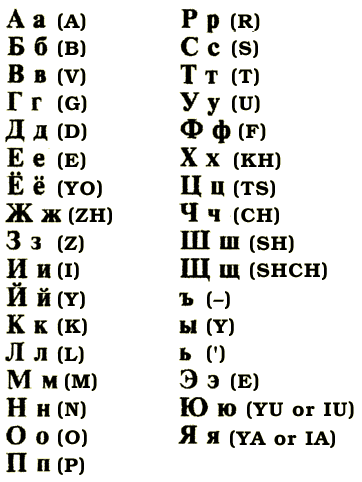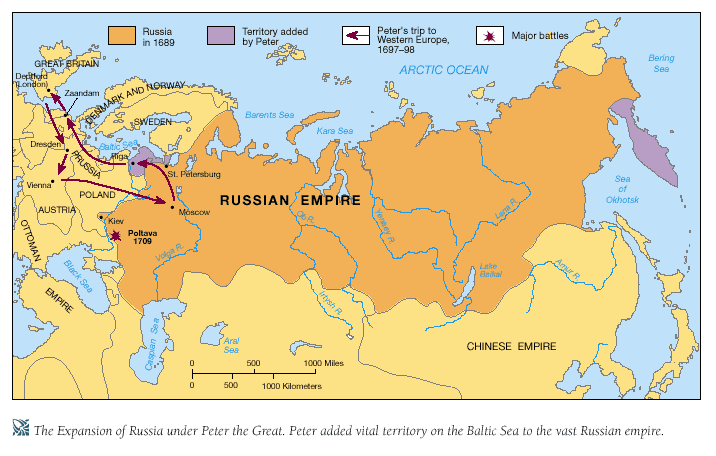Russia 1450 – 1750: How does Russia enter the period of globalization?
While lagging behind European and Asian counterparts, Russia takes distinct steps to engage on a more equal scale with the west. It will adopt western patterns that serve its leaders and economy while retaining its own unique forms in politics and some economic aspects.
Emergence from Mongol Control: 1400s
-
Left Russia behind in terms of trade and culture
-
No manufacturing or finished products
-
Limited access to ports or trade routes
Globalization: Much later than Europe, Many Challenges…..
-
Russia is somewhat limited. Because of Mongol rule, control and participation in trade is still somewhat regional, although it is a goal of Russia tsars to become more global.
-
Mercantilism not until later Global trade is not fully accomplished, but it is a goal of the Russian Czar!
New Societies and New Forms of Labor:
-
Tsar gains control of Eastern Orthodox church
-
Peter the Great Forced cultural conversion of elites to western styles such as fashion, no beards!
-
Feudal lords (Boyars) and the partner of the tsar, with grants of industry and manufacturing on their lands. (somewhat like the manorial system)
-
Reforms do not reach the masses. Reforms were for elites.
-
Women have increase status, no veiling.
-
Muslim regions in the south struggle with this rule.
-
Coerced Labor: Russian Serfs: The poorest of the poor.
-
Lose ownership of land under tsarist rule, reduced to serfdom and low status.
-
“Estate agriculture” Very wealthy landowners
-
Little innovation due to coerced labor
-
Trading is still mostly regional with access to good through Western European or Islamic merchants =NO MERCHANT CLASS
State Building: Expansion & Consolidation of the Russian Empire
Rise in Power of the Tsar (Czar): Peter the Great & Westernization:
-
Legitimacy through absolute power Western bureaucracy and law, but NO PARLIAMENT
-
Modernization of military, including navy, western hierarchies
-
Establish warm water ports in the north
-
Expansion of Territory to the South and the East
-
Cossacks = settlers of the Russian frontier, militia-like culture and activity, “existing on the periphery between Russia and the Middle East… made up of Russians and Ukrainians living semi-autonomously on the frontier, free from serfdom, and intermarrying with local populations. Skilled cavalry warriors, they clashed with Turks and Persians, sometimes on their own behalf, sometimes in alliance with the Russian state. Although several Cossack revolts troubled Russia in the 1600s and 1700s, they came firmly under control during the 1800s, and many served as the tsar’s most loyal troops.” Baron’s AP World History , 2017.
Catherine the Great (1729 – 1796)
-
Continued growth of the tsar (czar)
-
Put down peasant revolts
-
Expansionist, gets land on the Black Sea **HUGE for trade access, also gets part of Poland
-
“Enlightened” absolute ruler, embraced education and thinking, . . . however NOT ideas of democracy
-
Enhances powers of feudal lords, employs them also as bureaucrats, gives them wide local power. peasants go ever lower/ poorer.
Key Points and Reminders:
-
Urbanization does not happen like Europe, still mostly rural
-
Manufacturing done in countryside
-
VERY DEPENDENT on Western Europe’s trade due to lack of manufactured goods


Boyars: Russian noble elites, very high status and combined control most of Russian economic activities.
Cossacks: Russian peasants recruited to move south and east to populate the newly acquired territory.
They are very similar to the first American pioneers.

Consolidation of Power:
-
Tsars will work to maintain control over Russian Orthodox (Eastern Orthodox but with Russian flavor) Church and its leaders.
-
Territory. How do you consolidate power over such vast territory?
-
The early modern rulers grant their nobles an increasing amount of power and status to maintain economic goals and political control of territory. With so much to gain, nobles tend to remain loyal to the tsar.
-
Bureaucracy. Feudal landowners were part of the bureaucracy, so to overthrow the government was also a step to remove one’s own job and economic power. Pretty smart of those tsars, isn’t it?
Methods of Control:
-
What strategies did the Russian Tsars use to achieve unity and political stability?
